 Mafalda Book One
Mafalda Book One
Cartoonist: Quino
Translator: Frank Wynne
Publisher: Archipelago Books – Elsewhere Editions
Publication Date: June 2025
There’s no real way to quantify this, but it’s quite possible that to date Mafalda is the most famous comics character in the world who has not had her books translated widely into English. Well, that’s about to change. Next month, Archipelago Book’s childrens imprint, Elsewhere Editions, is releasing Mafalda Book One, a collection of the classic Argentine comic strips by the cartoonist Quino, available in English for the first time with a new translation by Frank Wynne.
Ahead of release, I had a chance to read this first volume in its entirety, and I’m happy to report that it’s absolutely delightful. Mafalda Book One features wonderful, formalistically experimental comic strip artwork. It features a well-defined cast of endearing characters. And it features a political point of view that feels just as relevant today as when these strips were first published from 1964 through 1973.
To start, the star of the strip is the six-year-old girl, Mafalda, who loves democracy (a concern in Argentina 60 years ago as it is in much of the Western world today) and hates soup. Her love of democracy plays out in childish ways, but it also frequently makes her appear more clever and clear-hearted than her exasperated parents. Filling in the world around Mafalda are a set of her classmates. There is Felipe who is similar to Mafalda in worldview, Susanita who just wants to get married and have kids, and Manolito, a staunch capitalist who is always looking out for his father’s store, frequently doing so by presenting counter views to Mafalda.
Those are the basics, and Quino uses that framework to deliver top-tier comic strip artwork. The figure style is one of those newspaper strips where the kids are small and cute, and the adults elongated and tired. You can almost see it as an influence on Calvin and Hobbes in this way. Mafalda herself is the type of adorable avatar one needs to anchor an iconic strip that has remained relevant in much of the world for as long as this one has.
The other quality I really enjoyed from this art was how willing Quino is to experiment with the limitations of the form. Within the 120-plus pages and 200-some strips, there are some really playful concepts here. The one that stands out most features Mafalda pondering why her home nation, Argentina, is in the southern hemisphere, which she says is upside down on the globe (see below). This realization causes the entire strip to invert itself, and we get a series illustrated that way (until she tapes a globe to her wall upside down, turning the strip back right side up). This kind of experimentation really breaks up a collection of strips like this, preventing it from ever feeling repetitive.
But the real star of the show here is Mafalda’s sensibility. It’s obviously a product of its era, but the way it engages with its era should feel very familiar to anyone who ponders the larger narrative arcs of the world today. There are strips in which characters grapple with the advent of new technologies (specifically TV), there are strips where wanting a better world is laughed away, and there are strips where desire for capitalistic success dominates all else.
My favorite bit in this entire first volume comes when one of the progressive characters ponders whether the world would be a better place if the world had more bookstores than banks — and he is instantly branded a “radical extremist” by his capitalism-loving classmate. Funny, poignant stuff.
Overall, it’s easy to see why these strips have been so endearing to so much of the world, and while they are very much informed by the place and time in which they were created, I think the vast majority of readers will find a timeless universality to the characters, their concerns, and the concepts. If you’re a student of world comics, historic comics, or just amusing newspaper strips, this is a book for you.
Mafalda Book One is due out in June 2025 via Elsewhere Editions
Read more great reviews from The Beat!
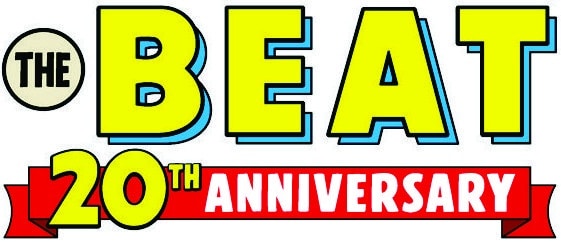
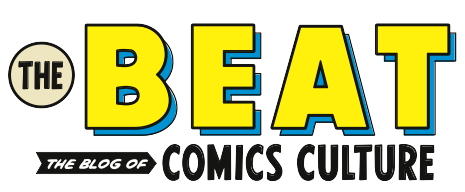
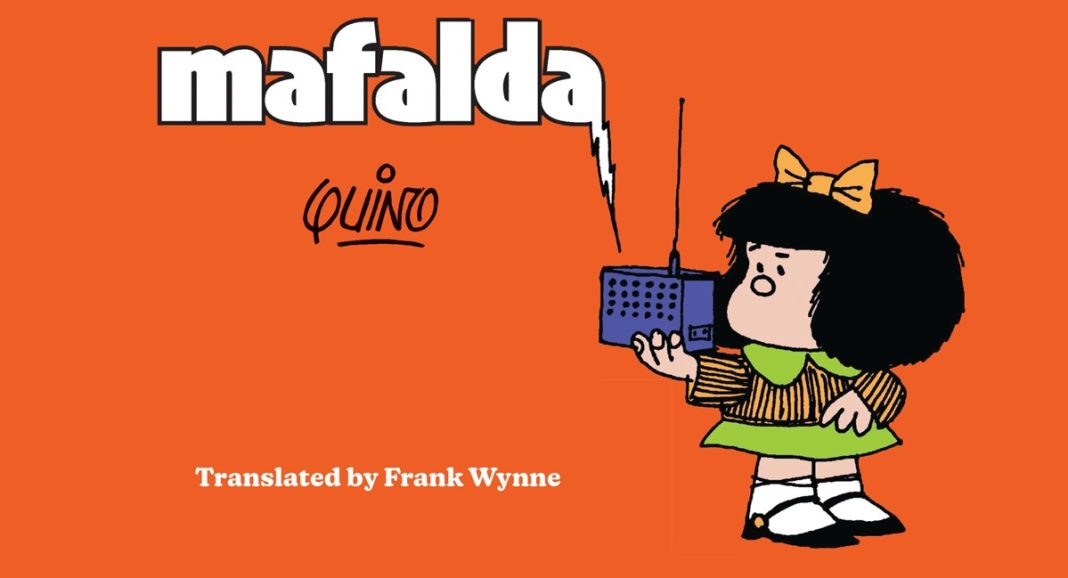

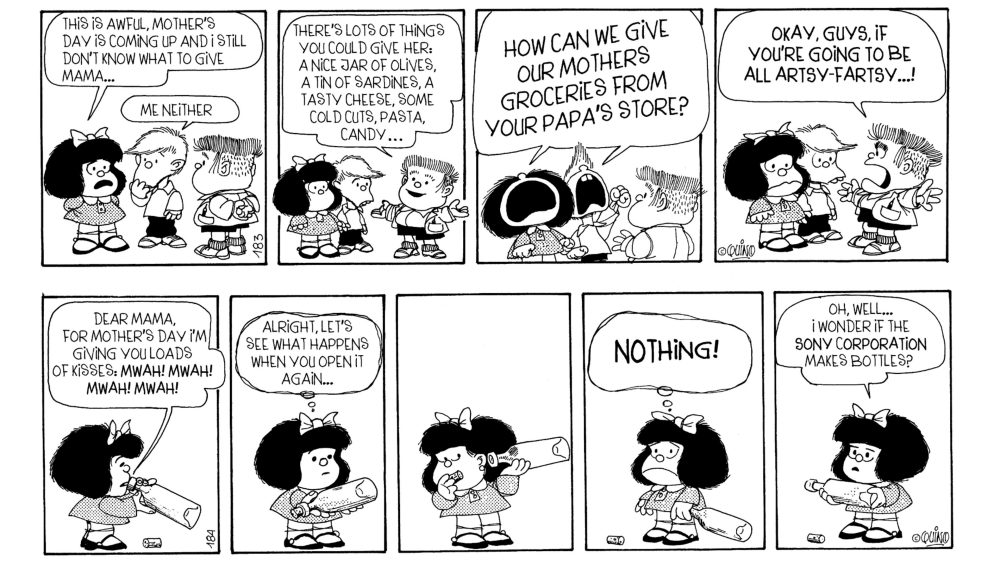
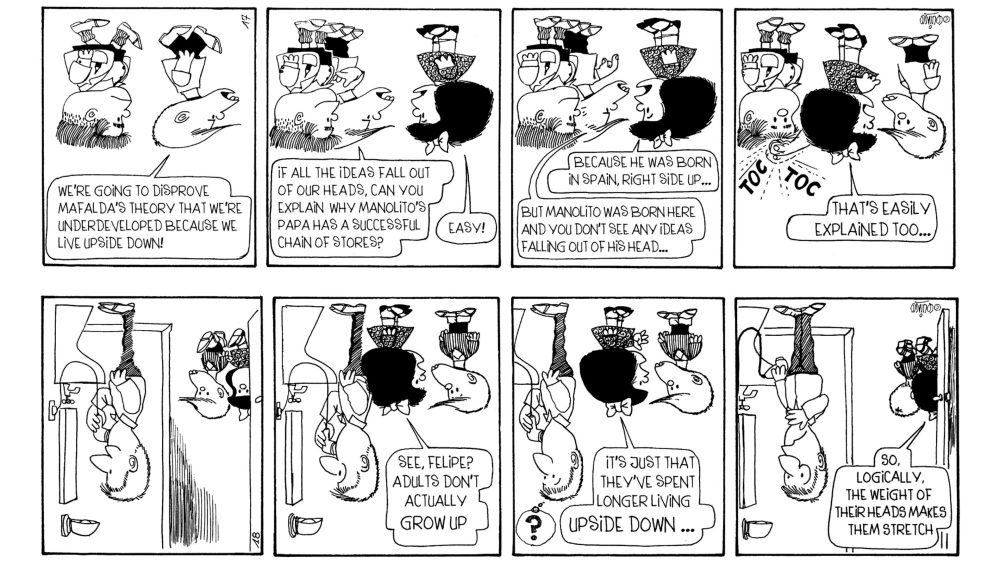
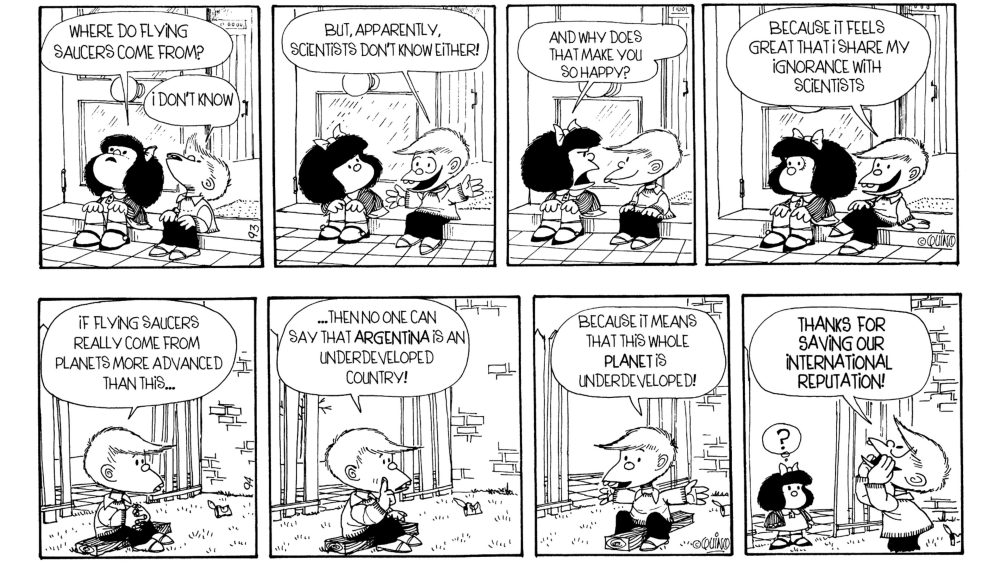
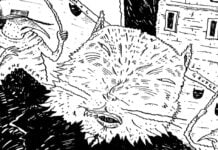

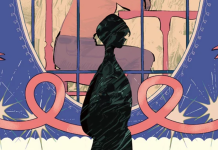






so much of this strip are local political references from that era that it should come with footnotes. the french compendium from 40 years ago had some.
Mafalda is the most transcendent and important comic strip in Latin America. I have the honor of owning an original of that strip that the master Quino gave me as a gift in 1985. I offer this original to collectors interested in acquiring it.
Comments are closed.